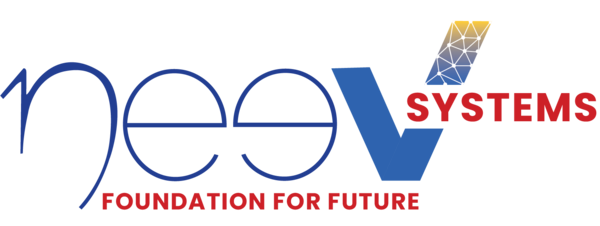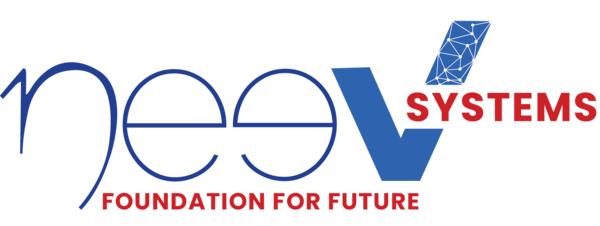When we think of innovation for IT digital transformation, we usually envision pioneering technological solutions or revolutionary concepts that can transform various aspects of our lives. However, such monumental leaps in innovation are more prevalent in theory than in reality.
While embracing disruptive technologies and radical strategies can bring immense value to your organization, they also carry substantial risks and uncertainties. Forward-thinking leaders often consider pursuing breakthrough innovations head-on as challenging and costly, with a fair share of risks.
Thus, many industries, including IT, have witnessed a steep fall in risk tolerance – organizations find stability in the familiar and endorse what works. This decreased risk tolerance stems from multiple factors, including –
- Navigating the complex ecosystem of applications is challenging, aggravated by a lack of visibility into their performance, scalability, usage, and user experience. Additionally, understanding the costs and return on investment (ROI) of these applications remains a blind spot for many organizations.
- Dealing with complex and time-consuming third-party integrations, interoperability challenges, and scalability issues makes managing multiple software platforms and integrations difficult. This scenario can become more challenging if the present IT service partner offers limited customization and integration capabilities for smooth workflows.
- Inefficient manual processes are exacerbated by challenges stemming from a lack of visibility and dependence on legacy systems.
- The lack of visibility into application costs and ROI and inefficient allocation of resources hinder cost optimization efforts, often increasing application maintenance and support expenses.
- The challenges of managing applications include a lack of in-house expertise and resources, which can lead to security vulnerabilities and risks. Additionally, upgrades and fixes always carry the risk of application downtime and business disruptions.
- Organizations often struggle to find a reliable and strategic IT services partner with industry-specific expertise and knowledge. Even if they do, many enterprises still lack proactive support, insights, and vendor management from the current IT service provider. Not all IT service providers can deliver top-notch service quality, proactive issue resolution, and ongoing support.
So, how can IT leaders strike the right balance between gaining the rewards of innovation and managing the potential costs of disruption, failure, or becoming obsolete?
The trick is to identify the “void” between the risk-return paradox.
This article delves into a proactive and comparatively less risky approach to pursuing high-reward IT strategies. It explores the concept of weaving together a series of “lily pads” consisting of investments in building capabilities, advancements in technology and methodologies, and explorations into new markets. We refer to this approach as enabling innovations, offering a promising path to navigate the risk-return paradox in innovation.”
Sustained innovation for IT digital transformation: Finding the balance between the risk-return conundrum
The risk-return paradox heavily influences how IT leaders perceive the risk levels in innovation. Generally, IT leaders consider innovation initiatives and their supporting funding as “investments” based on the expectation that higher risks should yield higher rewards.
On one end of the spectrum, we have investments focusing on incremental innovations or building upon proven concepts – low-risk, low-return endeavors. On the other extreme are “skunk works,” i.e., innovation projects aiming to revolutionize technology and business models, creating new product/service categories.
This traditional approach dictates that high risks accompany high returns, while low-risk innovations typically yield modest returns. However, a crucial gap exists in this framework: a space for investments offering lower risk and higher returns.
This seemingly void space is not empty if we redefine “return” as a “positive impact” benefiting the organization pursuing innovation and a much larger canvas of users.
Some may argue that successful “moonshot” innovations are determined by luck, risk-taking inclination, and a long, unpredictable evolutionary path. However, risks associated with high-impact strategies don’t solely stem from ambitious goals but also from how IT leaders frame and implement them.
Understanding the two innovation approaches – Moonshot and Lily Pad Strategies
Creating a significant impact through an “enabling innovation” strategy starts with breakthroughs – this could be technical inventions, discoveries, or radical ideas representing a step change, even if their initial impact is little.
Financial success is closely tied to the impact of an innovation, and this connection is strengthened when more users adopt the new idea. Broader engagement with the innovation can speed up user adoption.
Often, IT leaders adopt the moonshot innovation approach spanning longer durations, demanding substantial resource investment to achieve ground-breaking innovation in a single application space. The process involves small tests and incremental advances in a particular direction until the mission succeeds. Achieving the innovation objectives can yield substantial benefits, but the focused vision in a particular application limits opportunities to expand into other areas. Since it often takes longer to see tangible results, moonshot efforts may fail due to decreasing support and challenges in shaping breakthrough ideas into enabling innovation.
Contrarily, lily pad innovation implementation, IT leaders can take a strategic approach to develop capabilities in spaces ready for adoption. Instead of risking bulk resources on a single use case, IT leaders choose the low-hanging fruits (i.e., low-risk initiatives). They integrate the existing solutions – in parts or as a whole – to the needs of end-users in spaces ready to embrace them.
The lily-pad strategy begins with a long-term goal, but the short-term vision isn’t limited to a specific end-user or application. Instead, it’s about satisfying end-users ready to adopt new disruptive solutions. User adoption in one lily pad creates cash flow and the pathway for successive lily pads in broader application spaces.
The approach to sustained IT innovation is to leap across lily pads, including areas that hold secondary importance early on to create interest in the chosen concept both within and outside the organization. By gradually bringing parts of an enabling innovation together over time, IT leaders can maintain a strong market foothold and gain a competitive edge.

Low-Risk, High-Reward IT Strategies
Maximizing Returns with Minimal Risk: IT Innovation Strategies / Balancing Innovation and Risk: IT Innovation Best Practices
IT leaders must acknowledge that the key to creating successful low-risk, high-reward IT innovation strategies lies in aligning the organization’s goals and adapting to its unique circumstances.
- Incremental Innovation: Break down larger projects into smaller, manageable steps. Focus on enhancing existing processes, systems, or products rather than starting from scratch. This minimizes disruption and allows you to build on what’s already working.
- Agile Project Management: Embrace agile methodologies to increase project flexibility and collaboration. Agile practices allow teams to adapt quickly to changing requirements and deliver value in shorter iterations.
- ROI Analysis: Before embarking on new initiatives, conduct a thorough ROI analysis. Assess the potential benefits, costs, and risks associated with the project. Ensure that the expected rewards justify the investment.
- Cloud Migration: Gradually migrate non-critical applications and workloads to the cloud. This approach allows you to test and refine your cloud strategy before moving mission-critical systems. Leverage cloud scalability to meet evolving demands.
- Legacy System Optimization: Evaluate legacy systems to identify areas for optimization and modernization. Consider implementing microservices or containerization to extend the life of legacy applications and reduce maintenance costs.
- Data Analytics: Invest in data analytics tools and skilled personnel to harness the power of your data. Start with small pilot projects to demonstrate the value of data-driven IT decision-making and expand from there.
- Cybersecurity Enhancement: Regularly update your cybersecurity measures to protect against evolving threats. Implement multi-factor authentication, conduct regular vulnerability assessments, and ensure employee cybersecurity training is up-to-date.
- User Experience (UX) Improvement: Conduct user research and usability testing to identify pain points and opportunities for improvement in your IT systems. Prioritize changes that have the most significant impact on user satisfaction and productivity.
- Disaster Recovery Planning: Develop and regularly test a comprehensive disaster recovery and business continuity plan. It ensures your organization can recover quickly from unexpected disruptions and minimize downtime.
- Vendor Negotiation: Continuously assess vendor contracts and relationships to identify cost-saving opportunities. Negotiate for better pricing and service level agreements and explore bundling options to reduce expenses.
- AI and Automation: Integrate artificial intelligence and automation into routine tasks and processes to increase efficiency and reduce manual errors. Start with small, well-defined AI projects to demonstrate value.
- Robotic Process Automation (RPA): Evaluate opportunities for implementing RPA to streamline repetitive tasks and workflows. RPA can significantly reduce operational costs and improve accuracy.
- Customer Feedback Loop: Establish a continuous feedback loop with customers and end-users to better understand their needs and pain points. Use this feedback to drive product and service improvements.
- Cross-functional Collaboration: Foster collaboration between IT and other departments to identify innovative solutions to business challenges. Cross-functional teams can bring diverse perspectives and lead to more creative problem-solving.
- Employee Training: Invest in ongoing training for your IT team to keep their skills up-to-date. Offering access to collaborative tools can facilitate communication and knowledge sharing among teams. Encourage certifications and provide opportunities for professional development to enhance expertise.
- Green IT Initiatives: Implement environmentally friendly IT practices, such as server virtualization, energy-efficient hardware, and sustainable data center design. These initiatives can reduce operational costs and enhance your organization’s sustainability profile.
Organizations must partner with a reliable IT services partner with deep industry expertise and knowledge to address the complexities of the IT landscape and mitigate the associated challenges. Such a partner can provide the specialized insights and capabilities required to navigate the unique demands and nuances of the industry while addressing issues related to application management, security, and operational stability.
Walk the Path of It Innovation With Neev Systems: Your Reliable IT Services Partner
At Neev Systems, we’re committed to helping organizations stay ahead of market trends and explore emerging opportunities for IT digital transformation. Our industry expertise and vast resources empower us to provide innovative enterprise application and technology solutions that tackle real-world business challenges. Whether it’s streamlining processes, enhancing customer experiences, or improving operational efficiency, we’re here to turn your vision into action.
We take immense pride in our role as enablers of transformation. With our consultative implementation approach, we work closely with you to grasp your unique goals and challenges. Our tailored solutions, hands-on support, and rigorous testing ensure a seamless transition into your existing infrastructure, facilitating smooth data migration.
Our services suite includes:
- Enterprise Application Services
- IT & Security Transformation
- Data and Analytics
- Enterprise Integration Services
- Product Engineering
- Application Management Services
Through these comprehensive IT services, we continuously strive to enhance our solutions, offering you innovative tools and strategies that keep your organization at the forefront of the industry.
Choose Neev Systems as your IT Digital Transformation partner – we can reshape challenges into opportunities, complexity into simplicity, and visions into realities. Talk to our experts today to learn more about our services.

Unlock Innovation with Precision

Sitaram Pothula
With 22+ years of IT experience, Sitaram combines technical expertise with strategic leadership. He has led engineering teams and delivered solutions across BFSI, telecom, and healthcare. Sitaram excels in aligning technology with business goals to drive innovation and efficiency.


